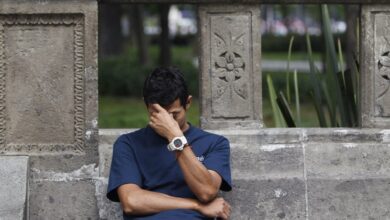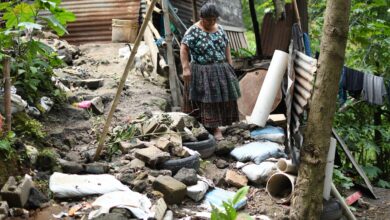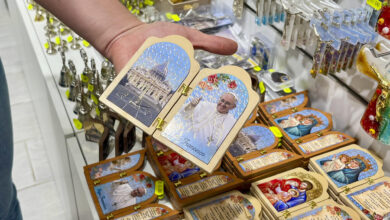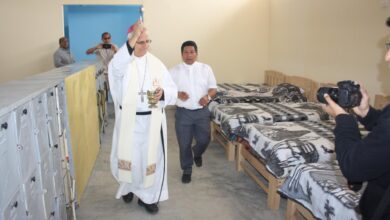Latin America Prays for Pope Francis’ Speedy Recovery
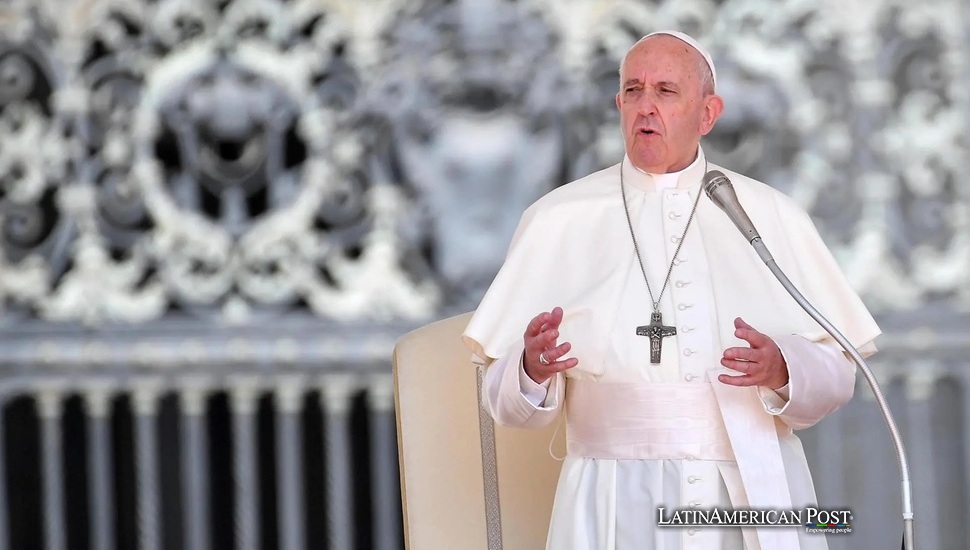
Catholics from Mexico to Argentina pray for Pope Francis from their region. As health updates remain worrisome, prayers plus evening vigils show their close bond.
A Region’s Fervent Devotion
Across many Latin American countries, Catholic churches fill with quiet prayers and and hopeful words for the region’s first pope. Born Jorge Mario Bergoglio in Argentina, he has long earned the love of millions of the faithful. Now that the Vatican reports that the 88-year-old pontiff’s health is very bad, these prayers matter even more.
In countries such as Mexico, Peru, Colombia, Chile, and Brazil, the devout gather nightly in cathedrals or community chapels, lighting candles while murmuring the Rosary. Many parishioners also go to special Masses focused on the pope’s recovery. In a sign of unity, some believers join round-the-clock vigils, showing that people in remote mountain villages and coastal cities hold the same trust in Francis’s health.
Although many Catholics have grown accustomed to the pope addressing global challenges—from climate change to economic inequality—seeing him on the receiving end of prayers for good health resonates deeply. Over the past decade, Francis has become an icon of humility and inclusivity. His approach and direct style have endeared him to many who have felt sidelined by previous Church leadership. In a religious landscape shifting rapidly, he stands as a beacon of continuity and innovation at once, especially for those who identify strongly with his Latin American roots.
Those roots were evident from the moment he stepped onto the balcony of St. Peter’s Basilica in 2013, greeting the faithful with a simple “Buona sera” (“Good evening”). That close, relatable tone, so characteristic of Francis, has continually drawn Catholics closer to their Church and each other. As the same close-knit community lifts him in prayer, there is a sense of reciprocity—an emotional cycle of faith wherein the region that produced Francis sends back its spiritual support in his time of need.
Argentine Roots Forging a Cultural Bond
Among the many Latin Americans interceding for Francis, Argentinians feel a special connection. As the first pope from the Western Hemisphere, Francis’s heritage is woven into everything he does, from his accent to his gestures of closeness to ordinary people. While Catholics worldwide may love Francis for his compassion, Argentinians see him almost as a father figure. They remember him as a Jesuit priest ministering on the tough streets of Buenos Aires and his tenure as archbishop in the city.
Argentina’s capital has become a focal point for prayers, especially in poor neighborhoods known as “villas.” According to Reuters, the Argentinian government encouraged all these communities to hold prayer gatherings for their beloved “Padre Jorge,” as many once called him. It was not just a simple announcement but a collective appeal to put differences aside and unite for the spiritual leader.
City authorities projected a massive photograph of Francis, alongside the phrase “the city prays for you,” onto Buenos Aires’s Obelisk—a famous monument usually reserved for national celebrations or commemorations. The illuminated message glowed in the night sky and served as a focus point for passersby who stopped to reflect, utter a prayer, or take in the moment’s significance.
Local Argentinian priest Adrian Bennardins, interviewed by Reuters, captured the sentiments shared by so many: “We … pray for him with trust in God and pray for his health with joy.” He emphasized that Francis has been a transformative figure for the Catholic Church, making it “closer, simple, fraternal, without leaving anyone out.” In these words, Bennardins highlighted the pope’s simplicity and his commitment to ensuring every person—regardless of social status—feels seen and included in the Church.
Prayers for Bridging Families and Nations
Yet, this phenomenon of collective prayer is not exclusive to Argentina. When Reuters spoke to worshippers in Mexico’s Basilica of Guadalupe, many expressed how the pontiff’s shared language and culture deepened their sense of belonging. “Since he’s a Latino, he speaks our language, and he shares the feelings of the Latino community because we come from a similar culture,” said Grisel Jimenez after attending Mass.
It is a statement that echoes across many Latin American societies. Pope Francis’s background involves the exact Spanish words, traditions, family structures, and festive customs that resonate widely in the region. Whether people reside on the Pacific coast of Chile, the Caribbean shores of Colombia, or the mountain highlands of Peru, they share a strong sense of connectedness to this pope.
In Brazil—the world’s largest Catholic country—families have organized small gatherings to pray the Rosary together. Community leaders have set up special sessions in Sao Paulo and Rio de Janeiro parishes, inviting the faithful to come together for “intentions for the Holy Father.” Helio Martins Da Silva, a parishioner in Sao Paulo, told Reuters, “As a Catholic, it’s not just about worshipping Christ, but also praying for the pope, praying for our church, and praying for the world.”
This unity also crosses denominational lines. Although some Latin Americans have migrated to other Christian communities or religions, Pope Francis remains widely respected because of his openness and willingness to engage with those of different faiths. Among the 54% of Latin Americans who still identify as Catholic—as found in a 2024 Latinobarometro survey—there is a deep-rooted appreciation for Francis’s role, who not only preaches service to the poor but actively demonstrates it through gestures of humility.
A Unified Hope for the Future
As the weekend went on, many people called for the pope’s recovery, trusting the strength of prayer together. “When a community prays together, it reaches God more easily,” said Gabriel Indihar, reflecting the faith in poor areas and affluent parishes. This idea is not unfamiliar to people across Latin America, where centuries of faith have relied on the strength of communal worship during crises—from natural disasters to social upheavals.
In the eyes of many, Pope Francis has championed the interests of vulnerable populations. Whether he speaks against corruption, supports the environment, or calls for care for migrants, he gives voice to issues that matter in Latin America. The region’s prayers show closeness to him as a religious figure and thanks for his work and honest guidance. By helping foster a “Church of the poor for the poor,” he has aligned himself with longstanding theological movements in Latin America, such as liberation theology—though he has balanced that approach with a measured stance.
The Vatican reports that his current hospital stay in Rome has sparked a wave of empathy rarely seen on such a scale. Though European popes have primarily led the Catholic Church, Francis’s election in 2013 marked a turning point showing a shift in the global center of the Catholic faith toward the southern hemisphere. This change reflects a silent promise spreading in the region: a promise to answer Francis’s many kind deeds with strong appeals for his quick recovery.
No official news shows when he may return to public work, yet clergy and people think Francis will push through, helped by prayers and medical help. Even with uncertain conditions, hope is everywhere. Observers point out that at earlier times in his papacy, when he faced health challenges or underwent procedures, the pope rebounded quickly, returning to greet enthusiastic crowds.
Still, the gravity of the present situation reminds believers and nonbelievers alike of the fragility of life, even for a world leader of Francis’s stature. The Catholic hierarchy closely monitors developments from Rome, but a certain calm or “holy resignation,” as some call it, pervades the faithful at ground level. They trust that their collective prayers will contribute to a positive outcome.
In these days of vigil, the faithful remain keenly aware that Francis has championed values that unite them across national borders—mercy, humility, and dialogue among cultures. They also recognize that the day will come when his leadership transitions to another figure. Yet, for now, what matters most is that Francis recovers and continues guiding the Church he has steered with compassion for more than a decade.
Latin America has shown that, despite internal cultural and political differences, it can still speak with a single voice in moments that touch the core of its identity. By gathering at shrines, basilicas, and city squares, believers illustrate that the well-being of “their pope” is a collective priority. And in answering the calls from priests, bishops, and civil authorities for a chain of prayers, they unite their hopes for Francis with a more significant aspiration for a peaceful and guided world—an aspiration Francis himself has labored tirelessly to promote.
Also Read: Argentina Confronts Milei’s Crypto Debacle Political Fallout
As long as Pope Francis remains hospitalized, the steady hum of prayer in Latin America will continue. Families will recite the Rosary, priests will highlight prayer intentions in special Masses, and faithful worshippers will light candles with quiet determination. The bond between the pope and the region remains strong, deepening a closeness that spans physical limits and spiritual walls. At this significant moment, Latin America prepares to honor its respected native son, believing their shared faith may bring comfort and cure and perhaps speed up his return to the global stage.

